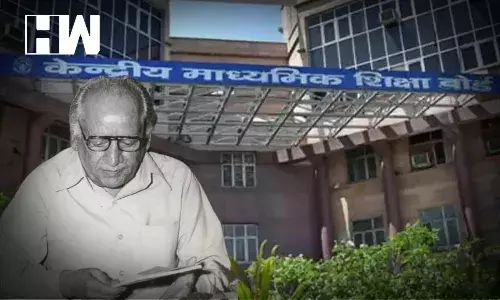New Delhi: Faiz Ahmad Faiz verses have been excluded from CBSE’s 2022-23 academic curriculum of Class 10, reported The Indian Express.
“We remain strangers even after so many meetings, blood stains remain even after so many rains.”
“Not enough to shed tears, to suffer anguish, not enough to nurse love in secret… Today, walk in the public square fettered in chains.”
For over a decade, these translated verses have been studied by the CBSE students. These verses are from two poems in Urdu by Faiz Ahmed Faiz in the “Religion, Communalism and Politics — Communalism, Secular State” section of NCERT’s Class 10 textbook “Democratic Politics II”.
The document of portion curriculum states which lists the Social Science course content for Class 10, states that the segment on religion, communalism and politics will continue to be part of the course content — “excluding image on page 46, 48, 49”.
Those image refer to two posters and a political cartoon.
One poster is depicting Faiz’s verses, was issued by NGO ANHAD (Act Now for Harmony and Democracy), which has social activists Shabnam Hashmi and Harsh Mander among its co-founders.
The two posters and the cartoon image are excluded from the course content.
As per the leading literary web portal Rekhta, the verses excluded from the poem were composed by Faiz. He had composed these verses when he was being taken from a jail in Lahore, in chains, to a dentist’s office in a tonga through lanes that were familiar to him.
The second poster is with the excerpts of the other Faiz poem, which was issued by Voluntary Health Association of India. It describes itself as a federation of 27 state associations. Rekhta says Faiz had written this poem after his visit to Dhaka in 1974.
The Times of India published a cartoon by Ajith Ninan depicting an empty chair covered with religious symbols. “This chair is for the CM-designate to prove his secular credentials…,” the caption reads. There’s going to be a lot of rocking!”
Chapters on democracy and diversity, were also dropped from the course content of the textbook. These introduced the concept of social divisions and inequalities along the lines of race and caste across the world, including in India; “popular struggle and movements” with focus on Nepal and Bolivia; and, “challenges to democracy” on reforming democratic politics, to students.
According to the “How to Use This Book” section, graphics, collages, pictures, posters, and a wide range of political cartoons occupy a significant amount of the book.
“These images provide visual relief and some fun. But you should not merely ‘see’ these images and turn the page. You are expected to ‘read’ the meaning of these images. Very often politics is carried out not through words but through images. The captions and questions that often accompany these images help you to read these images,” it states.
As an independent media platform, we do not take advertisements from governments and corporate houses. It is you, our readers, who have supported us on our journey to do honest and unbiased journalism. Please contribute, so that we can continue to do the same in future.

